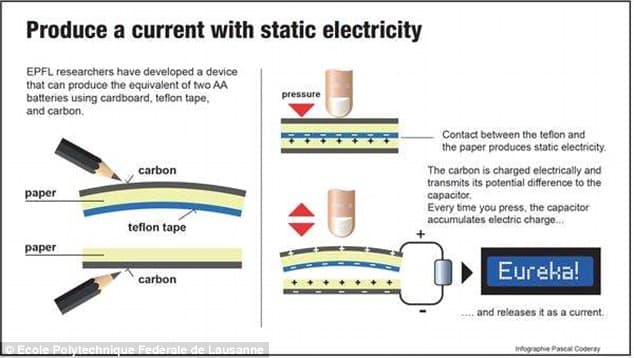Study Creates Homemade Power Plant Using Pencil, Teflon Tape And Cardboard

The concept upon which this discovery rests is static electricity; the transfer of electrons between two insulators when they come in contact. The system uses two cardboards, bent as a bow so that they don’t touch each other. Both the cardboards are scribbled with the pencil, so that the layer of carbon acts as electrodes. One of the cardboards is treated to teflon tape on the other side. They are placed in such a way that the system is enclosed by carbon electrodes on both sides, and two layers of paper beneath them, and a teflon tape in the middle.
When the cardboards are pressed against each other, they come in contact, and as a result, there is a charge polarity between them. When released and they get separated from each other, the charges are transferred to the carbon layer. The researchers attached a capacitor to the carbon electrodes which absorbs the charge generated every time the cardboards are pressed against each other.
As an enhancement to this already efficient system, Xiao Sheng used sandpaper to roughen the surfaces of the cardboards. This increased the area of contact, therefore amplifying the charge generated. The system experienced a spike in output of up to 6 times. The miniature power plant can light up a small LCD screen, power a remote control or nano sensor.
The research on generating energy from static electricity, also known as Triboelectric Nanogenerator, began in 2012. Xiao Sheng who is a post doctoral student at the EPFL (École Polytechnique Fédérale de Lausanne) Microsystems Laboratory in Switzerland, presented this paper at the IEEE conference, and is confident that it will be widely adapted in the medical field. Especially in developing countries, such low-cost paper diagnostic systems are already being tried, and could prove a cost-effective solution.
Source: #-Link-Snipped-#
